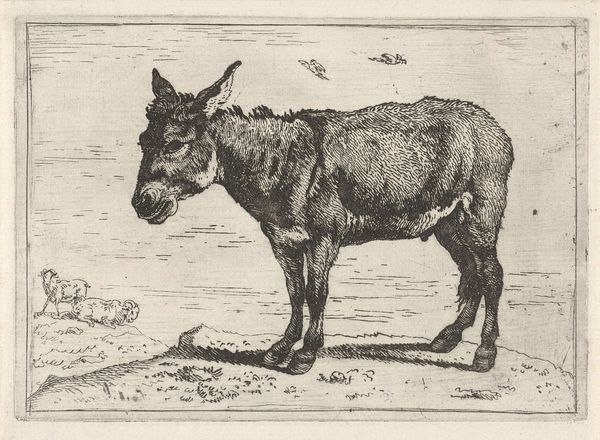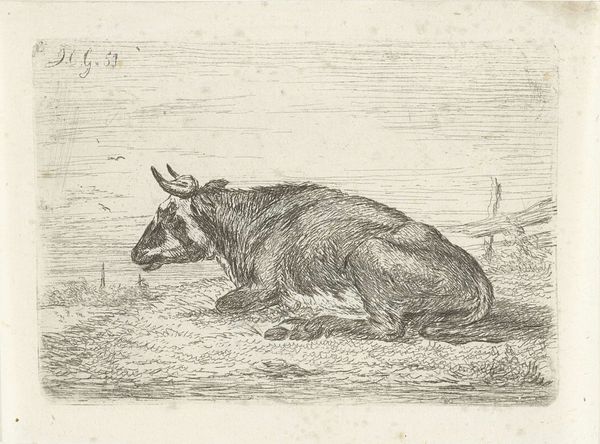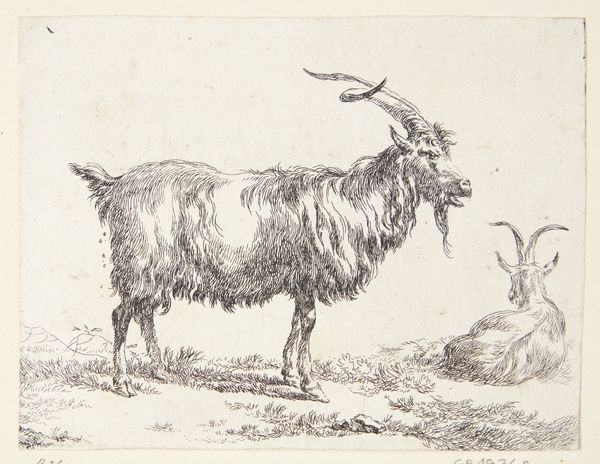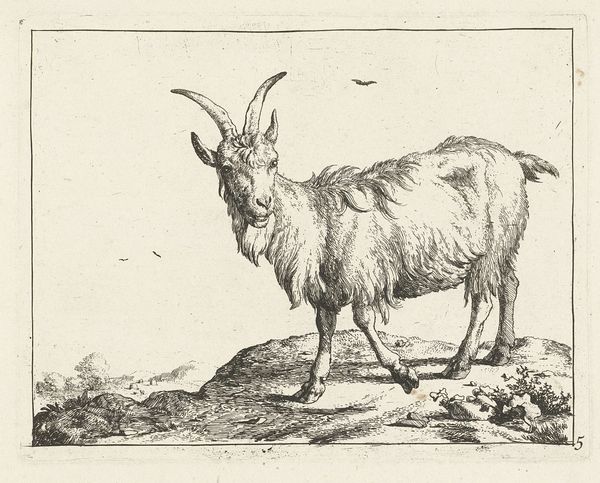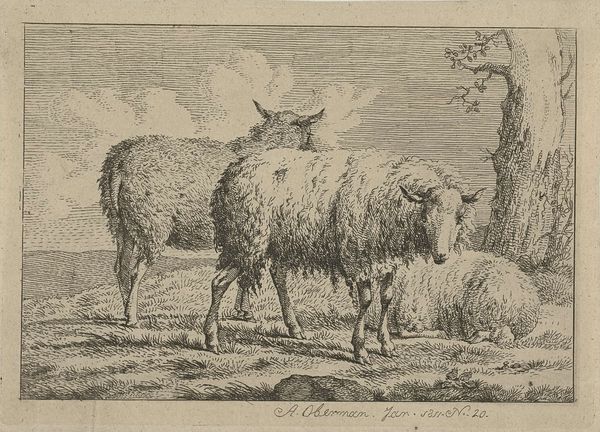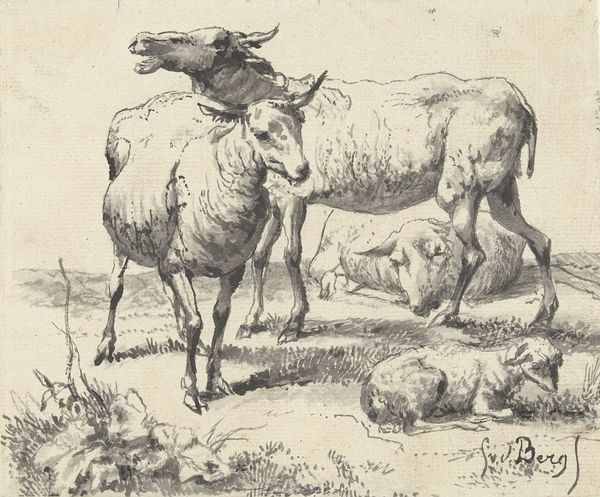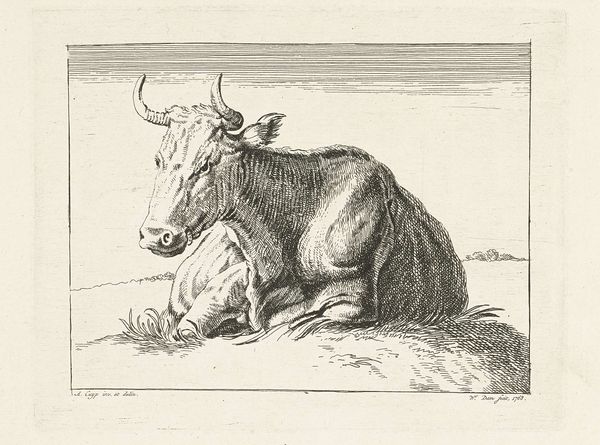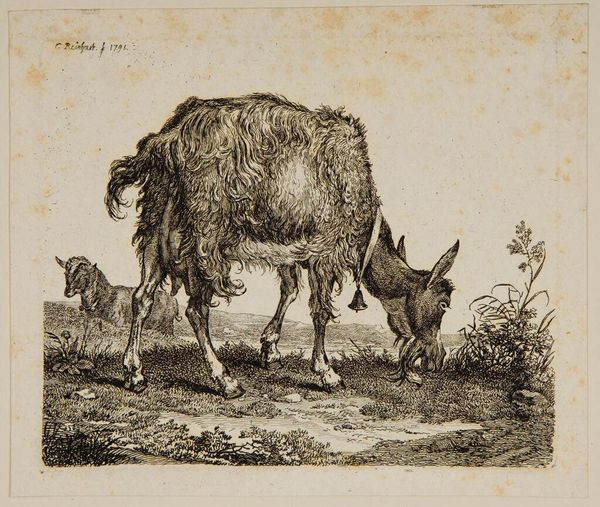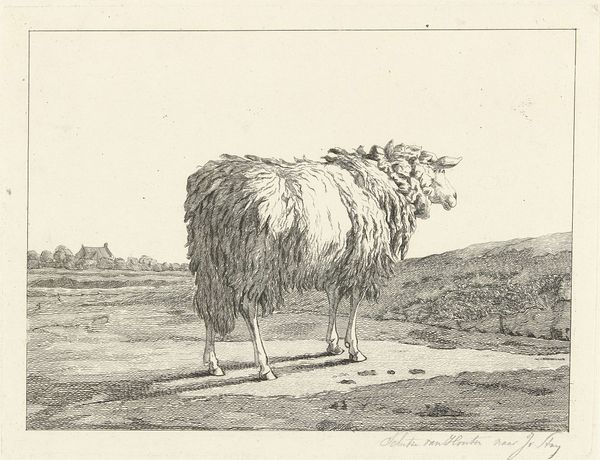
drawing, print, etching
#
drawing
#
quirky sketch
#
animal
# print
#
pen sketch
#
etching
#
pencil sketch
#
landscape
#
personal sketchbook
#
idea generation sketch
#
sketchwork
#
pen-ink sketch
#
line
#
sketchbook drawing
#
fantasy sketch
#
realism
#
initial sketch
Dimensions: height 84 mm, width 139 mm
Copyright: Rijks Museum: Open Domain
This etching of a donkey feeding, titled "Ezel," was made by Johannes van Cuylenburgh around 1817. The humble donkey, burdened with connotations of stubbornness and foolishness, has a long and varied symbolic history. In ancient mythologies, the ass carried gods and heroes, like Dionysus. Yet, folk traditions often portray the donkey as a figure of ridicule, a beast of burden representing ignorance. We find echoes of this duality in art across the ages. Think of Apuleius's "The Golden Ass," a comedic tale of transformation and folly from the second century. Or consider Shakespeare's "A Midsummer Night's Dream," where Bottom is famously given the head of a donkey, embodying a blend of humor and humiliation. The donkey stands as a potent symbol of how cultural meanings can shift and persist, resurfacing in different guises to evoke a range of emotions—from pity to derision. Through these recurring motifs, art becomes a mirror reflecting our collective psyche and cultural memory.
Comments
No comments
Be the first to comment and join the conversation on the ultimate creative platform.


